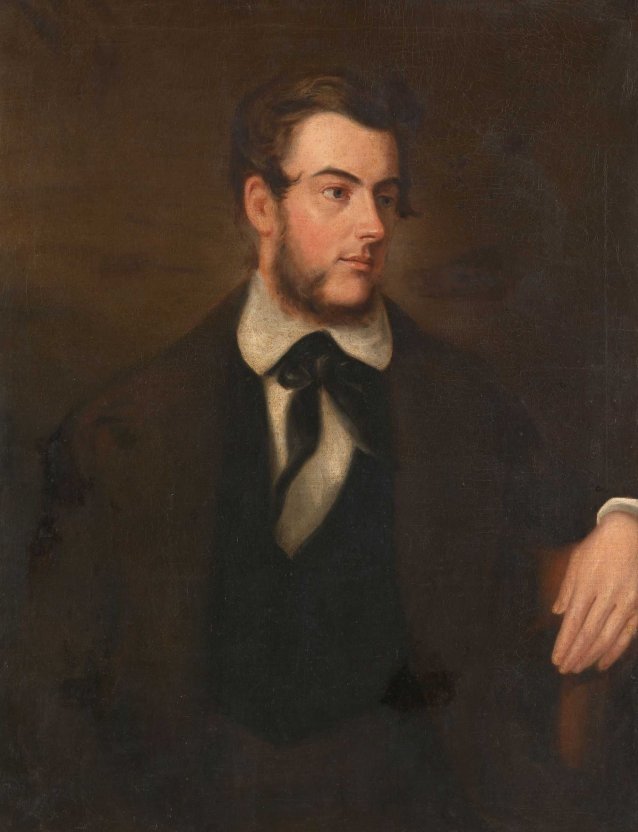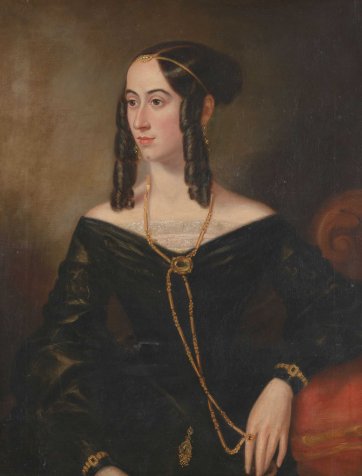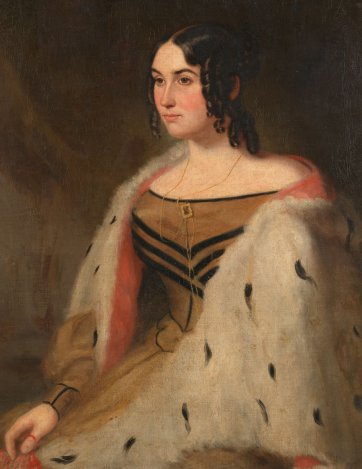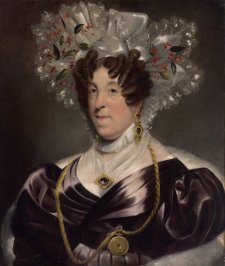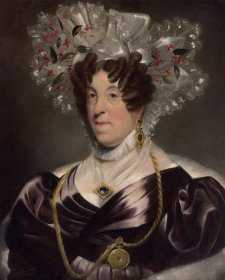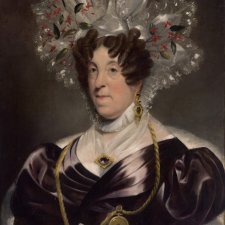John Tindale (1809-1872), landowner, was born in Warwickshire and came to Sydney at the age of 11 to join his father, a convict who had been transported to NSW in 1812. The senior Tindale received a free pardon in 1816, and after leaving the King's School in Parramatta, his son was able to develop farming enterprises around Bathurst. He married Mary Wybrow in 1830 and they had several children. By the time these portraits were commissioned, the couple was wealthy, and Tindale's landholdings increased through the following decades. However, the marriage broke up in the late 1840s and in the 1860s Tindale's health failed. In 1870 Tindale moved to New Town, Tasmania, where a couple of years later he shot himself at the rear of his home, Clydeville House.
Maurice Felton was born in England and trained as a surgeon in Glasgow before emigrating to Sydney in 1839. He exhibited some paintings a few months after his arrival, and soon became friendly with art patron Alexander Brodie Spark and artist Conrad Martens. After painting several portraits of Spark's family, Felton gained a number of portrait commissions and for a brief period he was the foremost portraitist in New South Wales. Between early 1840 and early 1842 he exhibited portraits and landscapes made in Sydney and its surrounding areas. In the year these portraits were painted, the Sydney Morning Herald reported that 'the prominent way in which Mr Felton brings out his figures from the canvas, both faces and bust, gives them a fulness and a rotundity very opposite to the pasteboard flatness of some otherwise good artists'. Felton died of unknown causes in March 1842.
Until they were acquired by the National Portrait Gallery, these were thought to be the only works by Maurice Felton remaining in private hands.
Collection: National Portrait Gallery
Purchased 2003
The National Portrait Gallery respects the artistic and intellectual property rights of others. Works of art from the collection are reproduced as per the
Australian Copyright Act 1968 (Cth). The use of images of works from the collection may be restricted under the Act. Requests for a reproduction of a work of art can be made through a
Reproduction request. For further information please contact
NPG Copyright.
